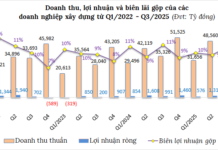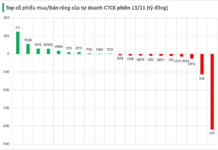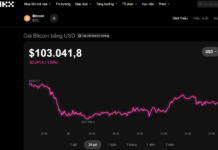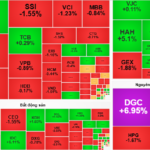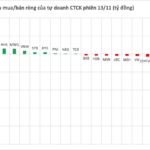Data from VietstockFinance reveals that as of September 30, 2025, total customer deposits across 28 banks exceeded 23.3 trillion VND, marking a 10% increase from the beginning of the year. Among these, non-term deposits (CASA) reached nearly 2.59 trillion VND, up 6% year-to-date and stable compared to the end of Q2.
Nineteen out of 28 banks experienced CASA growth since the start of the year. VietABank (VAB) led with a remarkable 74% increase, followed by MSB (+26%), VIB (+22%), VPBank (VPB, +20%), BaoVietBank (+19%), and OCB (+18%). Conversely, banks like LPB, SGB, and PGB saw declines in CASA.
In absolute terms, state-owned banks dominated CASA volumes. Vietcombank (VCB) saw a 1% rise to 537.059 trillion VND, VietinBank (CTG) increased by 13% to 432.549 trillion VND, and BIDV (BID) grew by 9% to 415.130 trillion VND.
Among private banks, MB (MBB) led with 283.169 trillion VND, up 4%. Techcombank (TCB) followed with a 15% increase to 220.673 trillion VND, while ACB rose 4% to 127.640 trillion VND. Despite a 3% drop, Sacombank (STB) remained fourth among private banks at 99.057 trillion VND, with VPBank in fifth place at 80.111 trillion VND.
|
CASA at banks as of September 30, 2025
Source: VietstockFinance
|
By the end of Q3 2025, 18 out of 29 banks reported a decline in CASA ratios compared to the start of the year, up from 14 banks in Q2.
TCB topped the system with a 37.08% CASA ratio, followed by MBB at 35.93%, VCB at 33.32%, MSB at 26.46%, and VietinBank (CTG) at 24.36%.
|
CASA ratios at banks continued to decline in Q3 2025
Source: VietstockFinance
|
An MB representative stated that CASA reached approximately 292 trillion VND, up 27% year-on-year, maintaining its market-leading position. This enabled MB to sustain low funding costs, a robust structure, and optimized profit margins.
Techcombank’s representative noted a 42.5% CASA ratio, with balances totaling 272 trillion VND, up 12.1% quarter-on-quarter. Individual customer CASA, including Auto Savings balances, rose 29.5% year-on-year, while corporate CASA grew by 46%. These results were driven by customer-centric solutions like Techcombank Auto Savings 2.0, business household solutions, and comprehensive payment services.
At MSB, CASA exceeded 51 trillion VND, up 25% from 40.8 trillion VND at the end of 2024, accounting for 27.83% of total deposits. “The CASA ratio has risen for the fourth consecutive quarter, reflecting MSB’s efforts to enhance digital experiences and effectively engage customers through convenient product suites,” an MSB representative commented.
Assoc. Prof. Dr. Nguyen Huu Huan – Senior Lecturer, University of Economics Ho Chi Minh City observed that the banking system’s CASA ratio continued to decline compared to Q2, despite overall deposit growth. This shift highlights changes in depositor behavior, necessitating a detailed analysis of total deposits’ components.
Firstly, total deposits increased primarily due to rising term deposits. CASA, by nature, comprises funds held in transaction accounts for daily needs, offering near-zero interest rates but serving as crucial low-cost funding to enhance banks’ net interest margins (NIM).
Secondly, the system-wide CASA decline indicates reduced idle funds in transaction accounts. Individuals and businesses are moving funds from current accounts to other forms of investment.
According to Dr. Huan, this shift reflects the landscape of alternative investment channels. In Q3, the stock market may have been in a correction phase, lacking clear growth trends and short-term appeal. Similarly, the gold market saw minimal fluctuations. With riskier investments failing to offer breakthrough returns, funds gravitated toward safer options. Depositors prioritized shifting idle funds from transaction accounts to term deposits for fixed interest rates, ensuring capital preservation and optimized returns, albeit modest. This is a rational financial decision.
However, the CASA decline is not alarming. If the reduction is slight, it does not signify significant liquidity concerns. This could be a temporary adjustment in response to interest rate environments and investment opportunities. Q4 data will clarify whether this trend is sustainable.
Mr. Nguyen Quang Huy – CEO of Finance and Banking Faculty, Nguyen Trai University attributed the CASA decline to natural interest rate cycles and depositor behavior. Despite a 10% system-wide deposit increase, many banks saw CASA ratios drop.
The primary cause is not fund withdrawal but a shift from transaction accounts to short-term deposits for higher interest rates amid rising rates. Additionally, increased year-end production and trade activities temporarily reduced corporate idle funds in transaction accounts.
Essentially, the CASA decline reflects capital dynamism rather than weakness. As interest rates stabilize by Q1 2026, CASA ratios are likely to recover, particularly for banks with strong digital capabilities and payment ecosystems.
– 12:00 14/11/2025
Prof. Dr. Vu Minh Khuong: If Hanoi and Ho Chi Minh City Develop Subway Systems Like China, They Will Achieve Robust Growth in Just 10-15 Years
Vietnam stands at the precipice of transformative growth, poised to surge ahead by strategically focusing on three critical pillars: robust institutional frameworks, cutting-edge urban infrastructure, and a highly skilled workforce. This vision, articulated by Prof. Dr. Vu Minh Khuong, underscores the nation’s potential to leapfrog developmental barriers and emerge as a regional powerhouse.
Revamped Look of Da Nang’s $107 Million Fisheries Hub Unveiled
After over a year of extensive upgrades and expansion, Thọ Quang Fishing Port, Đà Nẵng’s largest fisheries hub, has emerged with a fresh, modern, and cohesive appearance.
Billionaire Pham Nhat Vuong Unveils Vietnam’s First Electric School Bus, Ensuring No Student Left Behind
Experience the future of transportation with VinFast’s EB 6 electric shuttle service. This cutting-edge, compact passenger vehicle boasts a spacious 19-seat design, ensuring a comfortable ride for all. Enjoy a smooth, quiet journey free from emissions and noise pollution, setting a new standard for eco-friendly travel.
Cathay United Bank Celebrates 20 Years of Operations in Vietnam
Cathay United Bank – Ho Chi Minh City Branch (CUBHCM) recently celebrated its 20th anniversary in Vietnam with a series of events held in Ho Chi Minh City and Hanoi, themed “Better Together.”















